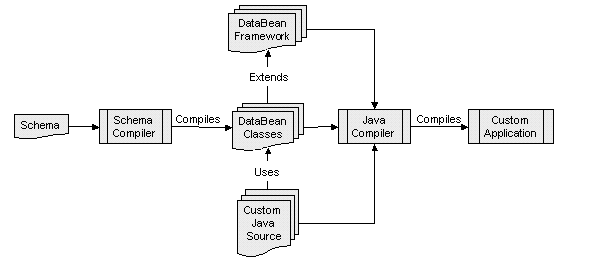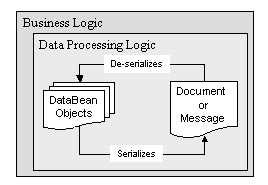Message Bridge generates code (DataBeans) that developers use in their application to make generation and consumption of document and message data easier.
Developers use Message Bridge to import XML DTDs and XML Schemas. Message Bridge converts these schemas into a neutral representation that developers can modify, enhance, and group into projects with other related schemas, as shown in Figure 1-4.
Figure 1-4: Building DataBeans

Using Message Bridge, developers can generate DataBeans for the individual schema definitions they select. These DataBean classes abstract the data contained in documents or messages in an intuitive manner. Each articular DataBean leverages shared runtime classes. The DataBean framework serializes and deserializes content from the network, validates content, and provides a read/write in-memory representation of message data.

Message Bridge can also generate artifacts to assist developers in using DataBeans in their applications. These artifacts facilitate development in various ways. For example, the XML DTD and Schema provide the developer with content model descriptions of each DataBean. By using these content models during design, developers are able to bring their own XML-based tools to bear, easily modeling runtime systems based on XML data authoring, manipulation, and transmission. The HTML documentation provides the Java developer with a detailed view of each particular DataBean’s content model, facilitating the incorporation of particular DataBeans and the DataBean framework into their own custom applications.